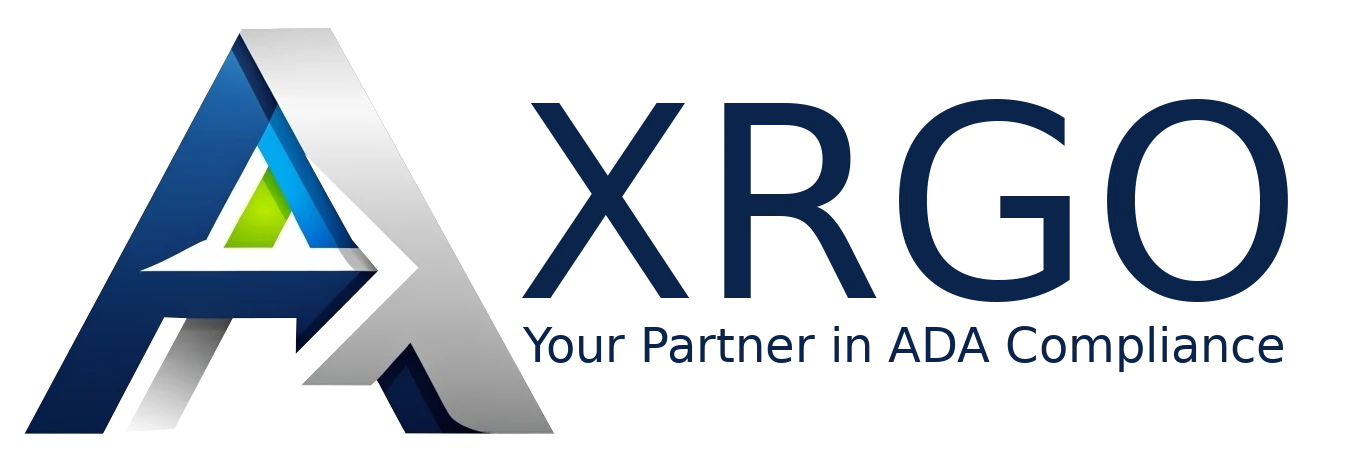Big dealership groups may have the budgets, but smaller dealerships can use asymmetric tactics to win online. This article explains how speed, focus, and innovation allow smaller dealerships to exploit the weaknesses of larger, slower competitors.
It breaks down why big dealers are vulnerable—bureaucracy, generic marketing, technical debt—and gives five practical tactics any smaller dealership can deploy, including ultra-fast sites, hyper-local landing pages, early adoption of new technologies, automated content strategies, and targeted exploitation of competitor weaknesses.
The message is clear: you don’t need more to win—you need to move smarter.
For decades, the automotive retail landscape in the U.S. has favored size. Large dealership groups benefit from bigger advertising budgets, larger inventories, and dedicated in-house marketing teams. Smaller dealerships have often struggled to compete against these giants, believing the only path forward is to spend more money or expand their footprint.
But that assumption is wrong.
History shows us that smaller forces can outcompete larger ones through asymmetric warfare, a strategy that focuses on speed, innovation, focus, and exploiting weaknesses, rather than matching resources head-to-head. The same principles that shape military strategy apply surprisingly well to the digital marketing battlefield of modern car sales.
Big dealerships have scale.
Small dealerships have agility.
The dealers who understand and apply asymmetric principles can punch far above their weight, consistently outranking, outmaneuvering, and outselling bigger competitors online.
Understanding Asymmetric Advantage
In military terms, asymmetric warfare involves using unconventional tactics to exploit the vulnerabilities of a stronger opponent. Instead of confronting power with power, a smaller force identifies where the opponent is slow, rigid, or complacent and attacks there.
In digital automotive retail, asymmetric advantage means using speed of execution, strategic focus, and innovative tools to gain an edge while larger competitors are bogged down by bureaucracy, outdated systems, or one-size-fits-all marketing strategies.
Consider these contrasting scenarios:
- When a large dealership group takes six months to approve a website redesign, a nimble dealership can launch two new lead funnels in a single weekend.
- When a large dealer spends $50,000 on broad paid advertising, a smart smaller dealer can generate comparable traffic and higher-quality leads using $500 worth of targeted SEO and email retargeting.
- When a large group uses the same generic content across dozens of stores, a small dealer can hyper-localize messaging to dominate specific zip codes and search queries.
This is the essence of asymmetric competition: using less to do more damage. It’s not about matching your competitor’s resources, it’s about making every move count.
Why Big Dealerships Are Vulnerable
It might seem like larger dealership groups would dominate digital competition simply by throwing money at it. But size creates its own set of vulnerabilities:
- Bureaucratic Inertia
Large organizations move slowly. Decisions about marketing, website updates, or strategy shifts often involve multiple layers of approval, committees, and vendor contracts. This creates windows of opportunity for smaller dealers to act faster. - Generic Marketing Strategies
Big groups often rely on standardized marketing templates to keep operations consistent across multiple rooftops. The result: bland, one-size-fits-all websites that fail to capture local nuances or respond quickly to market shifts. - Overreliance on Paid Media
Large dealerships frequently lean on paid advertising to maintain visibility. This is expensive and often inefficient, especially when their SEO and content strategies lag behind. - Neglected Technical Foundations
Many big dealer websites are bloated with third-party scripts, outdated design systems, and slow-loading templates. This leaves them vulnerable to faster, more optimized sites that rank better and convert higher. - Lack of Innovation
Big groups often adopt new technologies slowly because implementation at scale is complex. Smaller dealerships can experiment with new tools, platforms, and tactics much more quickly.
These weaknesses create openings. The question is: will smaller dealers exploit them?
Asymmetric Tactics for Dealerships
Here’s where theory meets execution. Smaller dealerships don’t need massive budgets, they need strategic precision. Below are practical asymmetric tactics any dealership can deploy to outcompete bigger players online.
1. Build Ultra-Fast, Lightweight Websites
Speed is one of the biggest hidden ranking factors. Google rewards websites that load quickly, and customers do too. Large dealership groups often rely on clunky, vendor-managed platforms that take 3–5 seconds or more to load. That’s your opening.
By using modern frameworks like Django or other lightweight architectures, a small dealership can build a site that loads in under one second. Fast sites get crawled more efficiently, rank higher in search results, and dramatically improve lead conversion rates.
Think of speed as the digital equivalent of mobility on the battlefield: fast forces can strike before the opponent has time to react.
2. Launch Hyper-Localized Micro-Landing Pages
Big dealerships may dominate for broad search terms, but they often fail to optimize deeply for local search. That’s where micro-landing pages come in.
By creating dedicated pages for each zip code, neighborhood, or local search variation, smaller dealers can own hyper-local SEO. Each page can be tailored to specific geographic terms, inventory highlights, and unique calls to action.
For example, instead of one generic “Used Cars” page, a dealer could build:
- “Used Trucks in 35216 — Fast Financing in Vestavia Hills”
- “Affordable SUVs in Homewood, AL — Easy Online Pre-Approval”
- “Best Used Sedans in Hoover — Schedule a Test Drive Today”
This tactic allows smaller dealerships to control niche terrain that big dealerships often overlook. Because these pages are lightweight and focused, they rank well and generate high-intent local leads.
3. Adopt Emerging Features Before Anyone Else
Innovation creates leverage. When larger competitors are slow to adopt new technologies, smaller dealers can gain an edge simply by being first.
Two examples stand out:
- Voice Search Optimization: As more consumers use voice assistants to find local services, dealerships that optimize their content for conversational queries can capture this traffic early.
- Accessibility Enhancements: Adding ADA-compliant features, like keyboard navigation, proper alt text, ARIA labels, and screen-reader compatibility not only expands your audience but also improves SEO.
By the time large competitors decide to adopt these features, your dealership could already own valuable search positions and brand recognition.
4. Automate Content for Freshness and Relevance
Search engines love fresh content, especially in competitive verticals like automotive. Large dealership groups often reuse stale, syndicated descriptions that barely change from week to week. This makes them predictable and easy to outrank.
Smaller dealerships can use AI-driven content workflows to rewrite vehicle descriptions daily, keep inventory pages dynamic, and publish localized blog content at scale. Tools that integrate with inventory feeds can ensure each vehicle page has unique, keyword-rich, and up-to-date text, without requiring a huge content team.
Fresh content signals activity and relevance to search engines. This asymmetric tactic can keep your site climbing while larger competitors plateau.
5. Exploit Competitor Weaknesses Relentlessly
Every larger competitor has weak spots. Common ones include:
- Slow website performance
- Poor mobile UX
- Generic content and lack of local focus
- No structured data or tracking systems in place
An agile dealership doesn’t try to be good at everything, it targets where competitors are lazy, and goes deep. For example, if your competitor has slow pages, make yours blazing fast. If they use generic landing pages, build hyper-local ones. If they ignore schema markup, add it and outrank them in rich results.
Executing Asymmetry Requires Commitment
None of these tactics require massive budgets. What they require is:
- A willingness to move quickly.
- A focus on high-leverage activities rather than chasing every trend.
- The discipline to exploit openings methodically rather than scatter efforts.
Asymmetric advantage works because large competitors rarely fix their weaknesses quickly. Bureaucracy, vendor lock-in, and complacency give smaller dealerships time to strike, adapt, and expand.
Dealerships that build this capability fast deployment, relentless optimization, and strategic creativity will consistently outperform larger competitors in digital channels, regardless of advertising spend.
Asymmetric warfare teaches us that bigger isn’t always better. In the digital automotive marketplace, agility, precision, and innovation often beat scale. Smaller dealerships that master these principles can:
- Launch campaigns in days, not months.
- Dominate local search niches others ignore.
- Adopt new technologies before the competition wakes up.
- Rank higher, convert better, and spend less.
While big dealers wait for the next budget cycle, the asymmetric dealer quietly captures market share, one fast-loading page, one optimized landing page, and one innovative feature at a time.
The battlefield is shifting. Will your dealership seize the asymmetric advantage, or become another slow-moving target?
Frequently Asked Questions
It’s the ability of smaller dealerships to use speed, focus, and innovation to outcompete larger dealerships, rather than trying to match their budgets or size.
Because they move slowly, rely on generic marketing strategies, and often operate with outdated or bloated technology, leaving openings for faster competitors.
By focusing on high-leverage strategies like SEO, local landing pages, content freshness, and site performance—areas where large dealers are often weakest.
- Build ultra-fast websites
- Create hyper-local landing pages
- Optimize for voice search and accessibility early
- Use AI to keep content fresh
- Exploit competitors’ slow response times
No. Many of these tactics rely on strategic focus and modern tools rather than large budgets or teams.
Some tactics, like faster load times and localized landing pages, can show measurable results within weeks. SEO and content strategies compound over time, delivering long-term competitive advantages.



Comments
Log in to add a comment.